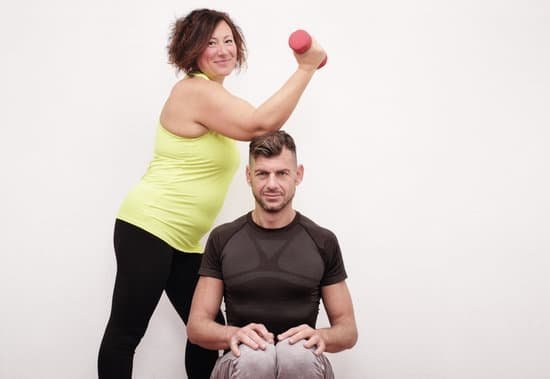Starting a fitness routine is crucial for your overall health and well-being. In today’s fast-paced world, it can be easy to neglect our physical health in favor of other priorities. However, taking the time to prioritize your fitness can have numerous benefits for both your body and mind.
Regular exercise has been proven to improve cardiovascular health, boost immunity, increase energy levels, and promote better sleep. It can also reduce the risk of chronic illnesses such as heart disease, diabetes, and certain types of cancer. Not only does exercise benefit our physical health, but it also plays a significant role in improving mental wellbeing. Exercise has been shown to reduce stress, alleviate symptoms of anxiety and depression, enhance cognitive function, and boost overall mood.
If you are considering starting a fitness routine or looking to recommit to your previous efforts, it is essential to assess your current fitness level and set realistic goals. This will allow you to determine where you stand currently and what you hope to achieve by implementing a regular exercise regimen. By setting specific goals that align with your desired outcomes, you can create a plan that helps you progress towards those objectives effectively.
In the following sections of this article, we will delve into different aspects of kickstarting your fitness routine. From designing a workout schedule that fits into your lifestyle to choosing the right exercises that suit your preferences and needs – this article will provide you with valuable insights and tips on how to embark on a successful fitness journey. So let’s get started on improving our overall health and well-being through the power of fitness.
Assess current fitness level
Assessing your current fitness level is an essential step in starting a fitness routine. Before setting goals and designing a workout plan, it’s important to understand where you currently stand physically. This assessment will help you determine your starting point and create realistic goals that you can work towards.
To assess your current fitness level, start by evaluating various components of fitness, such as cardiovascular endurance, muscular strength and endurance, flexibility, and body composition. You can do this by performing specific tests or exercises that target each component.
For example, testing your cardiovascular endurance may involve a timed run or assessing how long you can sustain a certain intensity on a stationary bike. Measuring muscular strength could include exercises like push-ups or squats to determine the number of reps you can complete with proper form.
Once you have assessed these components, take note of your strengths and areas for improvement. Be honest with yourself about what you need to work on and set realistic goals based on that assessment. Setting attainable goals is crucial because it keeps you motivated and prevents frustration if progress doesn’t come as quickly as anticipated. It’s better to set smaller milestones that you can achieve along the way rather than overwhelming yourself with unrealistic expectations.
By determining your starting point and setting achievable goals, you’ll be able to tailor your workout routine according to your needs and preferences. Remember that everyone’s fitness journey is unique, so don’t compare yourself to others. Assessing your current fitness level provides a solid foundation for creating the best plan suited for you, ensuring a successful start to your fitness routine.
Setting specific fitness goals
Setting specific fitness goals is a crucial step in starting a fitness routine. By identifying what you want to achieve, you can create a plan that will allow you to reach those goals effectively and efficiently. Whether your goal is to lose weight, build muscle, improve endurance, or increase flexibility, having a clear target in mind will keep you focused and motivated throughout your fitness journey.
Identify Your Goals
The first step in setting specific fitness goals is to identify what you want to achieve. Take some time to reflect on what is important to you and what you hope to gain from your fitness routine. It could be anything from running a marathon, fitting into a certain size of clothes, or simply feeling healthier and more energetic. Having a well-defined goal will help guide your actions and keep you motivated.
Create an Action Plan
Once you have identified your goals, it’s time to create an action plan that will help you reach them. Break down your larger goal into smaller, achievable milestones that can be measured along the way.
For example, if your ultimate goal is to lose 20 pounds in three months, set smaller weekly or monthly targets that are realistic and manageable. This approach allows for a sense of accomplishment as each milestone is reached and keeps you motivated for the next one.
Additionally, consider the steps and strategies that will support your progress toward your goals. If improving strength is one of your objectives, incorporate strength training exercises into your workout routine on designated days. If weight loss is a priority, pair regular cardiovascular workouts with mindful eating habits. By creating a detailed plan with specific actions tied directly to your goals, you are more likely to stay committed and achieve the results you desire.
Stay Flexible
While setting specific fitness goals is essential, it’s equally important to remain flexible throughout your journey. As you progress toward your initial target, reassess and adjust your goals accordingly. Your interests, abilities, and priorities may evolve over time, so it’s crucial to adapt your plan as needed.
Rather than becoming discouraged if you find your initial goal isn’t what you thought it would be, consider it an opportunity for growth and improvement. The ability to make adjustments along the way will help you maintain enthusiasm and continue making progress towards a healthier lifestyle.
By setting specific fitness goals, creating an action plan, and staying flexible with your approach, you can set yourself up for success in starting and maintaining a fitness routine. With clear goals in mind, you will have a roadmap to guide your actions and keep you motivated throughout your journey. Remember that achieving these goals takes time, patience, and dedication. Stay focused, celebrate your accomplishments along the way, and don’t be afraid to revise your plan as needed.
Creating a workout schedule
Creating a workout schedule is an essential component of starting and maintaining a fitness routine. Designing a realistic exercise routine that fits your lifestyle and commitments will help you stay organized, motivated, and consistent with your workouts. Here are some tips and strategies to help you create an effective workout schedule that works for you.
Evaluate Your Lifestyle and Commitments
Before creating your workout schedule, it’s important to evaluate your lifestyle and commitments. Consider factors such as work schedule, family responsibilities, social activities, and personal hobbies. By understanding the demands of your daily life, you can identify the best times for exercise and ensure that your workout schedule aligns with your other commitments. For example, if you have a busy workday, it may be more realistic to schedule shorter workouts in the morning or evening.
Be Realistic
When designing your workout schedule, it’s crucial to be realistic about the time commitment and intensity level of your workouts. Start by setting aside manageable chunks of time each day or week for exercise.
It’s better to start small and gradually increase the duration or intensity as you progress rather than overwhelming yourself with unrealistic goals from the beginning. Remember that consistency is key when it comes to fitness; it’s better to have shorter workouts on a regular basis than long workouts sporadically.
Variety and Balance
Incorporating variety into your workout schedule is important for both physical benefits and mental engagement. Include a mix of cardiovascular exercises, strength training, flexibility work, and rest days. This balanced approach will help prevent boredom, reduce the risk of overuse injuries, and provide overall health benefits.
It’s also important to listen to your body and adjust your workout schedule accordingly. If you’re feeling fatigued or experiencing muscle soreness from previous workouts, don’t hesitate to modify or take extra rest days as needed. Remember that rest and recovery are just as important as the actual exercise for overall progress and injury prevention.
Creating a workout schedule that fits your lifestyle and commitments is essential for making exercise a regular habit. By evaluating your lifestyle, being realistic about your time commitment, and incorporating variety into your routine, you can design an effective workout schedule that will keep you motivated and committed to achieving your fitness goals.
Choosing the right exercises
Choosing the right exercises is a crucial step in kickstarting your fitness routine. By exploring various workout options and finding activities that you enjoy, you are more likely to stick to your routine and achieve your fitness goals. Here are some tips to help you choose the right exercises for your fitness journey.
Assessing your preferences and goals
Before you start exploring different workout options, take a moment to assess your preferences and goals. Consider what type of exercise you enjoy most – whether it’s running, dancing, weightlifting, or practicing yoga. Think about what motivates you and what makes you excited to move your body.
Additionally, define your fitness goals and what you want to achieve through your exercise routine. Whether it’s weight loss, muscle building, flexibility improvement, or overall well-being – understanding your goals will guide you in selecting the right exercises.
Exploring different workout options
The world of fitness offers an array of workout options to choose from. Traditional gym workouts with weight machines and cardio equipment like treadmills and ellipticals are popular choices. However, there are many other options available that may be more appealing to you.
Yoga, Pilates, dance classes, outdoor activities like hiking or cycling, team sports – these are just a few examples of diverse workouts that can make exercising enjoyable for everyone. Don’t be afraid to try new activities or combine different types of exercises to keep things interesting.
Finding activities that suit you best
While trying out different workouts is important for finding what suits you best, it’s also essential to consider practical factors such as time commitment and accessibility. If joining a gym doesn’t fit into your schedule or budget, opt for home workouts or outdoor activities that allow flexibility in terms of time and location.
Similarly, if joint pain or physical limitations make certain exercises difficult for you, explore low-impact alternatives like swimming or cycling. The key is to find activities that you genuinely enjoy and can sustain in the long term.
Overall, choosing the right exercises is about finding a balance between what you like, what aligns with your goals, and what fits into your lifestyle. By exploring different options, you can discover activities that not only help you get fit but also bring joy and fulfillment to your fitness routine. Remember, exercise should be something you look forward to rather than feel obligated to do, so don’t be afraid to experiment and have fun along the way.
Incorporating strength training
Incorporating strength training into your fitness routine is essential for achieving overall health and well-being. Strength training not only helps to build muscle and increase strength, but it also offers a wide range of benefits that can enhance your overall fitness journey.
One of the key benefits of strength training is its ability to improve bone density. As we age, our bones naturally begin to lose density, which can lead to an increased risk of osteoporosis and fractures. By incorporating strength training exercises into your routine, you can help maintain and even increase your bone density, making it an integral part of any fitness plan.
Strength training also plays a crucial role in weight management. Building muscle increases your metabolic rate, which means that you burn more calories throughout the day even at rest. Additionally, muscle takes up less space than fat, so as you build muscle and lose fat through strength training, you may notice changes in your body composition and appearance.
When it comes to building muscle, there are numerous exercises that you can incorporate into your routine. Some popular ones include squats, deadlifts, bench presses, and bicep curls. It’s important to focus on proper form when performing these exercises to ensure optimal results and reduce the risk of injury.
To make it easier for yourself to incorporate strength training into your routine, consider creating a schedule that includes specific days dedicated solely to this type of exercise. Aim for at least two to three sessions per week initially and gradually increase the frequency as you become more comfortable and experienced with strength training.
Incorporating strength training into your fitness routine offers numerous benefits that go beyond just building muscle. Whether you’re looking to improve bone density or manage weight more effectively, incorporating these exercises will help you achieve your goals faster while enhancing overall health and well-being.
Cardiovascular exercises
Cardiovascular exercises play a vital role in any fitness routine. They help improve heart health, increase endurance, and burn calories. When it comes to exploring different cardio workouts, there are countless options available. The key is to find the ones that suit you best and keep you motivated to stay consistent with your fitness routine.
One popular cardiovascular exercise is running or jogging. This activity requires no equipment (besides a good pair of running shoes) and can be done almost anywhere. It is an effective way to burn calories and build endurance. If running is not your cup of tea, consider brisk walking or power walking as alternatives.
Another great option for cardio workouts is cycling or biking. Whether indoors on a stationary bike or outdoors on a traditional bicycle, cycling provides a low-impact aerobic workout that strengthens the legs, glutes, and core muscles while also improving cardiovascular health.
If you prefer something more high-intensity, consider interval training exercises like High-Intensity Interval Training (HIIT). HIIT involves short bursts of intense exercise followed by periods of rest or lower intensity activity. This type of workout helps increase metabolism and burns calories even after you have finished exercising.
To keep things interesting, consider trying out other forms of cardio such as swimming, dancing, kickboxing, rowing, or jumping rope. The idea is to choose activities that get your heart rate up and make you feel accomplished at the end of each workout session.
Remember that finding the right cardio workouts for you may require some trial and error. Experiment with different activities until you find the ones that bring you joy while also challenging your body in a safe and efficient way.
| Cardio Exercise | Description |
|---|---|
| Running/Jogging | Aerobic exercise done by moving at a steady pace in which both feet leave the ground |
| Cycling/Biking | A low-impact exercise performed on a bicycle, either indoors or outdoors |
| HIIT | High-intensity interval training alternating between short bursts of intense exercise and rest periods |
| Swimming | A low-impact exercise performed in water using various strokes to build endurance and strengthen muscles |
| Dancing | An enjoyable and rhythmic way to elevate heart rate while improving coordination and flexibility |
Nutrition and hydration
Maintaining a balanced diet and prioritizing proper nutrition are crucial components in supporting your fitness journey. Nutrition plays a vital role in fueling your body for workouts, aiding in recovery, and optimizing overall health. Understanding the importance of a balanced diet and learning how to make nutritious food choices can greatly enhance and sustain your fitness routine.
A balanced diet consists of consuming the right proportions of macronutrients (carbohydrates, proteins, and fats) as well as micronutrients (vitamins and minerals) that the body needs to function optimally. Each nutrient group serves a specific purpose in supporting exercise performance and promoting overall health.
Carbohydrates are the primary source of energy for our bodies, providing fuel for both daily activities and physical exercise. Including whole grains, fruits, vegetables, and legumes in your diet can ensure an adequate intake of carbohydrates. Protein is essential in repairing and building muscle tissue damaged during exercise.
Good sources of protein include lean meats, poultry, fish, eggs, nuts, seeds, tofu, and dairy products. Lastly, healthy fats are important for hormone production as well as joint protection. Incorporating sources such as avocados, nuts, seeds, olive oil, and fatty fish like salmon or mackerel into your meals can help meet your fat requirements.
Proper hydration is also key to supporting your fitness routine. Staying hydrated improves performance by regulating body temperature and preventing muscle cramps or fatigue. As a general guideline, it is recommended to consume at least 8 cups (64 ounces) of water per day. However,your hydration needs may vary depending on factors such as activity level, climate conditions,and individual differences.
By establishing mindful eating habits centered around whole foods that nourish your body appropriately,you will provide yourself with the necessary nutrients to support optimal fitness performance while also reaping the benefits of enhanced energy levels,reduced risk of chronic diseases,and improved overall well-being.
| Nutrient Group | Food Sources |
|---|---|
| Carbohydrates | Whole grains, fruits, vegetables, legumes |
| Protein | Lean meats, poultry, fish, eggs, nuts, seeds, tofu, dairy products |
| Fats | Avocados, nuts, seeds, olive oil,fatty fish (salmon,mackerel) |
Incorporating recovery and rest
Rest and recovery are two crucial aspects of any fitness routine. While exercise is essential for improving your overall health and achieving your fitness goals, incorporating regular rest days into your schedule is equally important. Rest days allow your body to recover, repair itself, and adapt to the stress placed on it during workouts. In this section, we will discuss the significance of rest days and the importance of recovery in preventing injury.
Rest days enable your muscles, tendons, ligaments, and other tissues to heal and rebuild after intense workouts. It is during this rest period that your body repairs microtears in muscle fibers and replenishes energy stores. Adequate recovery time is also necessary for reducing inflammation in joints and ensuring proper hormone balance in the body.
Overtraining without allowing for sufficient rest can lead to a variety of issues including decreased performance, increased risk of injury, increased susceptibility to illness, hormonal imbalances, poor sleep quality, irritability, mood swings, and even depression. By taking regular rest days throughout your fitness routine, you allow yourself time to recharge both physically and mentally.
Incorporating active recovery activities into your routine is another important aspect of rest days. Engaging in low-intensity exercises such as swimming or walking can improve blood circulation to promote faster healing while still allowing for necessary recovery time. Additionally, practices like yoga or stretching sessions can help enhance flexibility, reduce muscle soreness, relieve stress, and improve overall mobility.
To prevent injury during your fitness journey, it is crucial to listen to your body’s signals. If you’re feeling excessively fatigued or experiencing persistent pain or discomfort from previous workouts that doesn’t improve with rest or self-care measures like icing or stretching, it’s important to consult a healthcare professional.
By prioritizing rest days and incorporating active recovery activities into your routine, you can minimize the risk of overtraining and decrease the chances of injury. Remember, it’s not only about pushing your limits during workouts but also giving your body enough time to recover and rest, ultimately leading to better performance in the long run.
| Significance of Rest Days | Importance of Recovery |
|---|---|
| – Allows for muscle repair and growth | – Promotes faster healing after intense workouts |
| – Reduces inflammation in joints | – Helps replenish energy stores |
| – Prevents decreased performance and increased risk of injury | – Enhances hormone balance in the body |
| – Improves sleep quality and mood stability | – Gives time to recharge mentally and physically |
Staying motivated and accountable
Maintaining motivation and accountability is crucial to staying on track and achieving your fitness goals. Here are some strategies to help you stay motivated and enthusiastic throughout your fitness journey:
- Set specific and achievable goals: Setting clear, measurable goals can give you something to strive for and help you stay focused. Break down your larger fitness goal into smaller milestones that you can celebrate along the way. This will not only keep you motivated but also give you a sense of accomplishment as you achieve each milestone.
- Find a workout buddy or join a fitness community: Exercising with a friend or joining a fitness group can provide the support and encouragement you need to keep going. Having someone to exercise with can make workouts more enjoyable and challenging, and they can hold you accountable if you’re tempted to skip a workout. Additionally, participating in group activities or classes can provide a sense of camaraderie and make the experience more fun.
- Reward yourself: Treat yourself for reaching milestones or sticking to your routine consistently. Rewards don’t have to be extravagant; they can be as simple as a massage or buying yourself new workout gear. These rewards serve as incentives and reinforce positive behavior, making it easier to stay motivated.
- Keep track of your progress: Documenting your progress is essential for staying motivated because it allows you to see how far you’ve come. Keep a workout journal, take progress photos, or use fitness apps that allow you to log your workouts and track your performance over time. Seeing improvements in strength, endurance, or weight loss can fuel your motivation.
- Mix up your routine: Doing the same exercises over and over again can lead to boredom and demotivation. Incorporate variety into your workouts by trying new activities, exploring different types of exercises, or signing up for classes that challenge you in different ways. Keeping things fresh and exciting will help prevent monotony and maintain enthusiasm.
Remember, staying motivated throughout your fitness journey is a marathon, not a sprint. There will be days when you lack the motivation or energy, but implementing these strategies can help you push through those moments and stay on track. By staying accountable to yourself and finding ways to enjoy the process, you’ll increase your chances of making lasting changes to your fitness routine.
Tracking progress and making adjustments
Tracking your progress and making adjustments are key components in maintaining a successful fitness routine. By implementing tools to measure your progress, you can effectively track your growth and identify areas where adjustments may be needed. This section will explore different ways to track your progress and provide guidance on how to make necessary adjustments to your routine.
One effective tool for tracking progress is keeping a fitness journal or using a fitness tracking app. Keeping a record of your workouts, including the exercises performed, sets, reps, and weight lifted, can help you see improvements over time. Additionally, tracking other factors such as resting heart rate, body measurements, or even how you feel mentally and physically after each workout can provide valuable insights into your progress.
Another tool for measuring progress is setting specific goals and periodically reassessing them. Take the time to reflect on the goals you initially set and determine if they are still applicable or if they need to be adjusted. For example, if your initial goal was to complete a 5K run without stopping but now find that you have achieved that goal, it may be time to set a new goal like improving your race time or increasing the distance.
Adjustments to your routine may be necessary when certain exercises become too easy or repetitive. It’s important to challenge yourself by increasing weight resistance or intensity as needed. Gradually increasing the difficulty level of exercises will continue pushing your body towards new levels of strength and endurance.
Conclusion
In conclusion, starting and maintaining a fitness routine is crucial for overall health and well-being. By following the steps outlined in this article, you can kick-start your fitness journey and set yourself up for success.
Assessing your current fitness level and setting realistic goals are important initial steps to determine where you are and where you want to be. From there, creating a workout schedule that fits your lifestyle and commitments is essential for consistency. Remember to choose exercises that you enjoy, as this will increase your motivation and make it easier to stick with your routine.
Strength training and cardiovascular exercises both play important roles in achieving fitness goals. Incorporating both into your routine will help build muscle, improve endurance, and increase overall fitness levels. Additionally, proper nutrition and hydration are key components of a successful fitness journey. Fueling your body with a balanced diet will provide the energy needed to perform at your best.
Rest days and recovery should not be overlooked. Taking time to rest allows your muscles to repair and prevents overuse injuries. Staying motivated throughout your fitness journey can be challenging, but by implementing strategies such as finding an accountability partner or tracking progress, you can stay on track even during challenging times.
Lastly, remember that tracking progress is crucial for making adjustments along the way. As you become stronger and more fit, adjust your routine accordingly to continue challenging yourself.
Frequently Asked Questions
How do I kickstart my workout routine?
Kicking off your workout routine can be intimidating, but with a few key strategies, you can begin on the right foot. Firstly, set specific and realistic goals for yourself. Consider what you want to achieve, whether it’s increased strength, weight loss, or better overall fitness. Once you have a clear objective in mind, create a structured workout plan that incorporates various types of exercises such as cardio, strength training, and flexibility exercises.
Gradually increase intensity and duration over time to prevent burnout or injuries. Additionally, finding an activity you enjoy can boost your motivation and make sticking to your routine much easier. Remember to start slow and gradually build up your stamina and strength to avoid overwhelming your body initially.
How do I start exercising after years of inactivity?
Starting to exercise after years of inactivity requires a cautious approach to prevent injury and avoid overwhelming your body too quickly. It’s recommended to consult with a healthcare professional before starting any new exercise program if you’ve been inactive for a long period or have underlying health concerns. Begin by incorporating low-impact activities like walking or swimming into your routine as they are gentle on the joints while still providing cardiovascular benefits.
Aim for at least 150 minutes of moderate-intensity aerobic activity per week spread across multiple days. As you become more comfortable with these activities, gradually introduce strength training exercises using light weights or resistance bands to build muscle mass and improve overall fitness levels.
How do I start working out again after years?
Restarting your fitness journey after years away from working out may seem daunting, but with some careful planning, you can ease back into it effectively. It’s crucial to listen to your body during this process – give yourself permission for rest days when needed and focus on gradual progress rather than trying to jump back into intense workouts from the beginning. To get started again after years away from exercising regularly, begin with low-impact activities like brisk walking or cycling to slowly increase your cardiovascular endurance without straining your body too much at once.
Incorporating flexibility exercises such as stretching or yoga can help improve mobility and reduce muscle tightness. Remember to be patient with yourself and celebrate each small milestone achieved along the way, as consistency and perseverance are key in reclaiming your fitness level.

Passionate about providing useful information to anyone with an interest in the field of Personal Training, I strive to pass on to our readers quality information and to answer any questions about Personal Trainers, the work they do and how to become one.





